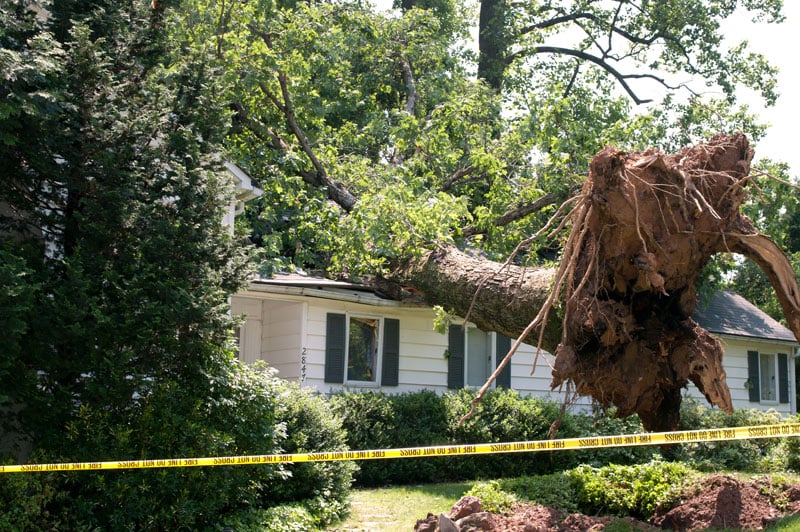
Severe storms can wreak havoc on both residential and commercial properties. High winds, heavy rain, hail, lightning, and floods can result in extensive structural damage, water infiltration, and even power outages. The aftermath of a storm can be overwhelming for property owners, who not only have to deal with insurance claims but also need to ensure their property is properly restored to a safe and habitable condition.
In this informative post, we will explore the importance of professional storm damage restoration services and how they can play a vital role in safeguarding your home or business.
When a storm hits, the resulting damage can vary widely, from shattered windows and roof leaks to uprooted trees and flood damage. Assessing the full extent of the damage can be a daunting task, which is why hiring a reliable and reputable restoration service is crucial. These professional teams are trained to handle the unique challenges presented by storm damage, and they possess the skills, experience, and equipment necessary to restore your property to its pre-storm condition.
Professional storm damage restoration services offer a systematic approach to assessing and repairing the destruction caused by storms. They also work closely with insurance providers, helping property owners navigate the claims process and ensuring that they receive fair compensation for the incurred losses. Furthermore, these professionals can help mitigate potential secondary damage, such as mold growth or structural instabilities, by addressing issues promptly and effectively.
In this blog post, we will delve into the professional storm damage restoration process, discussing the essential steps and methods that restoration experts use to recover your property. From initial assessment to water extraction, structural drying, and reconstruction, you’ll gain valuable insight into how these services ensure that your home or business emerges from a storm in the best possible condition.
We will also explore the importance of selecting a trustworthy and certified restoration service provider and discuss strategies for minimizing storm damage risks in the future. Armed with this information, you’ll be better prepared to handle the challenges that storms can present to your property.
The Steps Involved in Professional Storm Damage Restoration
Understanding the steps involved in the storm damage restoration process can provide clarity and peace of mind during a stressful time. A professional restoration company will typically follow a procedure similar to the one outlined below:
- Emergency Response and Assessment: After a storm has struck, a professional restoration team will promptly visit your property to assess the damage. They will identify the scope of the repairs needed, create a detailed plan, and determine the necessary resources and equipment to carry out the job efficiently.
- Mitigating Further Damage: The restoration team may take immediate measures to protect your property from additional damage, such as boarding up windows, placing tarps over exposed roofs, or pumping out floodwater. These temporary measures help prevent further issues until the property can be fully restored.
- Water Extraction and Drying: For properties suffering from water damage, the next step is to remove standing water and excess moisture using specialized equipment like pumps and vacuums. The restoration crew will then dry the affected area using air movers and dehumidifiers to prevent mold growth and structural damage.
- Cleaning and Decontamination: Storm damage can lead to contamination from sewage, mold, or chemicals. Restoration experts will thoroughly clean and sanitize the affected areas, ensuring that your property is safe for inhabitance.
- Reconstruction and Repair: Finally, your property will undergo the process of rebuilding damaged structures, restoring elements like drywall or flooring, and replacing damaged belongings. The professional crew will work diligently to return your home or business to its pre-storm condition.
Selecting a Reputable Storm Damage Restoration Company
Your home or business is a significant investment, which is why entrusting it to a qualified and reputable storm damage restoration company is essential. Keep the following factors in mind when selecting a provider:
- Certifications and Licensing: Ensure that the company you choose is certified by relevant organizations, such as the Institute of Inspection, Cleaning, and Restoration Certification (IICRC), and operates under proper licensing and permitting.
- Experience and Training: Seek a company with a proven track record of storm damage restoration services and trained technicians who stay up-to-date with industry best practices. Inquire about previous projects or read reviews and testimonials to gain insight into their expertise.
- Rapid Availability: Storm damage often requires immediate attention to prevent further damage and potential health hazards. Choose a company that offers 24/7 emergency service and can respond quickly to your needs.
- Communication and Transparency: Restoration projects can be complex, and it is vital to work with a provider that communicates effectively, keeping you informed of the project’s progress, and providing transparent cost estimates.
Preventative Measures to Minimize Storm Damage Risk
While storms are unpredictable, property owners can take steps to reduce the risk of severe damage in anticipation of a storm event. Consider the following precautions:
- Inspect Your Property Regularly: Check your roof for missing shingles, damaged flashing, or signs of leakage. Inspect your gutter system for blockages that may cause water to overflow and enter your property. Repair any issues you discover promptly.
- Trim Trees and Branches: Trees near your property can cause significant damage during storms if not appropriately maintained. Trim overhanging branches and remove dead or unstable trees, reducing the possibility of falling hazards.
- Secure Objects and Reinforce Windows: During high winds, objects such as patio furniture or trash cans can become dangerous projectiles. Secure or store these items away before a storm, and consider installing storm shutters or impact-resistant windows to protect against flying debris.
- Prepare a Storm Response Plan: Create a practical storm response plan in advance, which includes emergency contact information, evacuation routes, and essential documents. Taking these steps will help ensure that your family or employees know what to do in the event of a storm.
Trust the Pros for Efficient Storm Damage Restoration
Severe storms can present unique challenges for residential and commercial properties, and expert storm damage restoration services are crucial in returning your property to a safe, functional state. By understanding the restoration process and choosing a reputable provider, you can alleviate the stress and uncertainty caused by storm damage.
Furthermore, by taking preventative steps and preparing for potential storm events, you can minimize the risk of damage and protect your valuable investment. Trust your property to the skilled hands of Restoration Masters, and rest assured that you’ll receive attentive, efficient service that puts you on the path to full restoration and recovery.
When disaster strikes, trust Restoration Masters for fast and reliable damage restoration services. As an independent, locally owned and operated company, we’re dedicated to serving Los Angeles, Orange, Riverside, and Ventura counties with full-service restoration for both residential and commercial buildings. With our experienced team and state-of-the-art equipment, we’ll work to restore your property to its pre-damage condition as quickly and efficiently as possible. Don’t wait – contact us today and let Restoration Masters be your partner in restoring your property with our damage restoration service.





